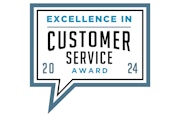How Smart Video Fuels Smart Business
Learn how video solutions with intelligent analysis capabilities can help benefit your drivers and enhance safety programs.
Read more
As a fleet-based business owner, you’re concerned with promoting safer driving behaviors, increasing productivity and improving customer experience—all while realizing ROI and minimizing disruption to your day-to-day operations.
The right GPS fleet tracking solution can help on all fronts. Now’s the time to consider if you’re ready to invest and research the best steps to take to get the most out of that investment.
Fleet owners and fleet managers must thoughtfully consider where to invest resources and how those investments will impact other areas of the business. Especially in today’s economic environment, it’s critical to examine costs and trim where possible to make as much capital available for needed investments. As expenses increase, keeping a watchful eye on where those increases could be mitigated is key.
To make this assessment effectively, however, you need data that highlights where you can cut costs. This is where GPS fleet tracking technology comes in.
If you’re grappling with cost containment and resource allocation, a near real-time GPS fleet tracking system can help provide insight into expenses. For example, businesses whose workers provide services in the field at a residential or commercial site can benefit from route optimization to help reduce unnecessary mileage, fuel costs and excessive vehicle wear and tear on vehicles. Ensuring time—and vehicles—are well-utilized helps you maximize productivity and provides an accurate picture of resource usage.
In addition, getting on top of safety and security is paramount to keeping employees safe and your business profitable—unsafe driver behavior or vehicles can prove a significant liability. The National Highway Traffic Safety Administration (NHTSA) states that U.S. motor vehicle crashes in 2010 cost almost $1 trillion in loss of productivity and loss of life. In its “Guidelines for Employers to Reduce Motor Vehicle Crashes,” the Occupational Safety and Health Administration (OSHA) estimates an on-the-job crash that results in employee injury costs an average of $74,000 to the employer.
If you’re having issues with accidents, false liability claims, or you suspect unauthorized use of vehicles or equipment, a GPS fleet tracking system can help you get ahead of the problem before you’re faced with serious impacts on your reputation and bottom line in the form of lawsuits, payouts and rising insurance premiums.
If you’re struggling with any of these issues or simply want to streamline operations, now could be the right time for you to invest in the best GPS fleet tracking software. However, before you jump in be sure to take a thoughtful approach to selecting and implementing the right telematics solution.
Once you’ve decided it’s the right time to invest in a GPS vehicle tracking system, a smooth implementation becomes key to seeing that ROI quickly. It may seem that procuring a powerful GPS tracking solution is the first step, but there are five things you want to do before signing a contract to ensure you’ve found the solution that best fits your business needs.
You want to identify and prioritize your goals for the system before you buy, including all the metrics you wish to track. It is more important to focus on a few key areas that will benefit your organization the most, so try to stick with just two or three short-term goals to start. For example, if you are looking to improve productivity by optimizing routes, you want to measure the average route distance to determine benchmarks for each vehicle type in your fleet. You could also measure the change in fuel spend to determine how effective your routing has been.
There are many GPS fleet tracking companies to choose from, but the quality of technology and customer service varies. Choose a provider that is willing to take the time to dive into the specifics of your fleet, your goals and what you hope to accomplish. Look for a system that offers an intuitive dashboard and ease of use from a provider known for being user-friendly, innovative and financially stable. Technology is a big investment, so make sure the company is backed by responsive, knowledgeable account managers and customer support representatives. Ask for referrals and pricing. Talking with customers who have had both successes and failures with the systems you are considering will help you get a full picture of the system’s capabilities. Create a checklist of the features and functionality you need.
A trustworthy provider will be willing to demonstrate its system and walk you through the various features. These should include dashboards, reports, live maps, alerts and route replays, so you can see first-hand how you’ll be able to use the systems to track vehicles and analyze data. Make sure they focus on demonstrating how the features you are most interested in will work once it is deployed to your entire fleet.
No matter how functional and dynamic a fleet management system is, if management and supervisors aren’t on board, your implementation will suffer. Get everyone on the same page by helping them understand what you want the system to accomplish. Share your goals and show how the new system will help you reach them. You should also outline the benefits that GPS fleet tracking devices will bring to your company’s overall bottom line.
Getting buy-in from your drivers before implementing your system is a key element to ensuring a smooth and successful transition. Make sure to emphasize the impact the new system will have on customer service, including the ability to respond more quickly and to complete more jobs. Assure your drivers their safety and the company’s reputation are your top priorities. Outline how the system will benefit drivers directly, like an incentivized driver safety program, if you plan to use one.
Tags: Cost control, Dispatching & Scheduling, Field management, Performance & Coaching, Productivity & Efficiency, Revenue & ROI, Team Management, Training




Find out how our platform gives you the visibility you need to get more done.
Learn how video solutions with intelligent analysis capabilities can help benefit your drivers and enhance safety programs.
Read moreAre you ready for vehicle tracking? Go through our checklist to learn the signs you’re ready to add fleet tracking to...
Read moreTechnology adoption helps fleets navigate operational obstacles. Learn what fleet management industry technology trends...
Read moreLearn how telematics can lead to operational improvements.
Read more
Get your free 2024 Fleet Technology Trends Report and see how organizations are: